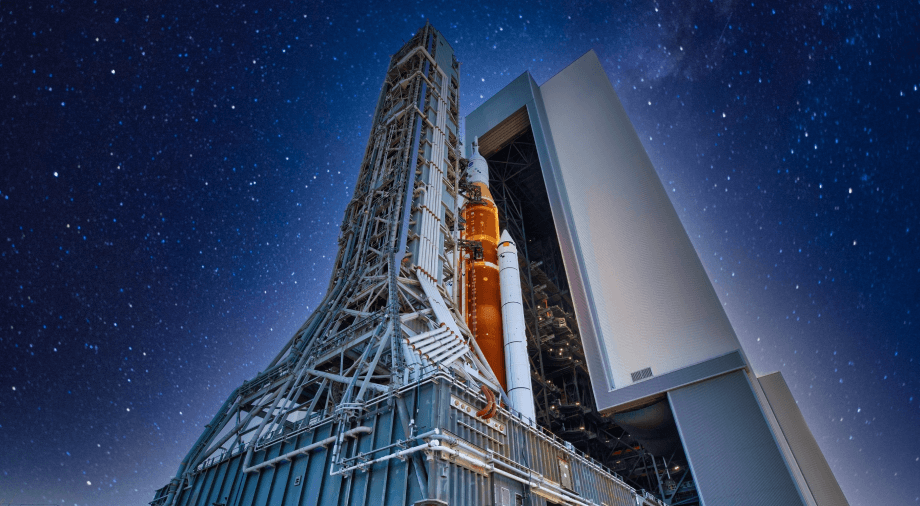When SpaceX CEO Elon Musk first publicly announced the concept of Starlink, a global satellite constellation that would cover the entire globe with broadband internet, back in 2015, many were skeptical. It was difficult to imagine launching thousands of Starlink satellites into orbit, and even more difficult to imagine how they could be maintained as a monolithic constellation.

It is now the middle of 2023, and over 4,500 Starlink constellation satellites are already in Earth orbit, with SpaceX planning to increase the number to 42,000 in the future. The technology has long gone beyond just a global Internet provider, as demonstrated by the war in Ukraine, where SpaceX satellites play a crucial role in the communications architecture of Ukrainian troops and critical infrastructure objects.
Let’s recount how far the project has come. This is the story of Starlink.
Note: This is the first part of a series of three articles on Starlink. This text is introductory, and does not concern Starlink directly. However, the series of successive events described below best explains why the satellite constellations were born – whether for war or for the internet you use to read this story.
Telstar and Syncom 3: the first active communications satellites
The world’s first active communications satellite was Telstar, developed by the American Telephone and Telegraph Company (AT&T) in collaboration with Bell Telephone Laboratories and NASA. The cost of launching Telstar was estimated at $3 million by NASA, which was a colossal sum for launching a satellite into orbit at the time in the early 1960s. The agency understood, however, that satellite communications technology would cost much more in the future.
The spacecraft was launched into a non-geosynchronous orbit (NGSO) of the Earth on July 10, 1962 and began broadcasting a television signal to the United States, England, and France. By the end of its second week in orbit, the first telephone call, a fax, was transmitted through Telstar, and President John F. Kennedy conducted the first live transatlantic television press conference with its help.
The particulars of the satellite’s orbit limited its use for transatlantic television signal transmission to only twenty minutes per one near-Earth orbit, which the probe made every 157.7 minutes. Despite this, Telstar served as a pioneer in the field of active satellite communications, and it marked the beginning of the history of satellite telecommunications.
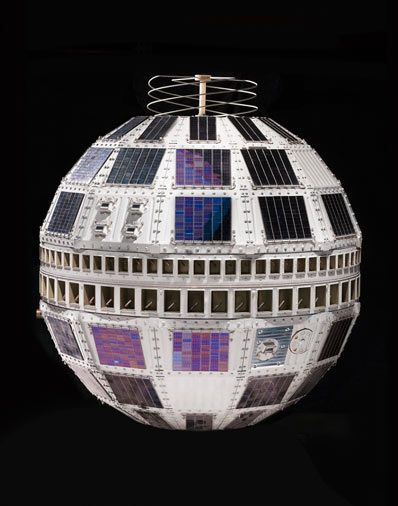
Two years later, on August 19, 1964, as part of NASA’s program to deploy communications satellites, Syncom 3 became the first active communications satellite to be launched into geostationary Earth orbit (GEO). The satellite’s stable equatorial geostationary orbit gave the probe the ability to move in sync with the planet’s rotational speed, constantly staying in a fixed position relative to the signal receiving station on Earth. From now on, communication satellites were no longer limited by time frames and could produce round-the-clock reception and transmission of a signal while in their area of responsibility.
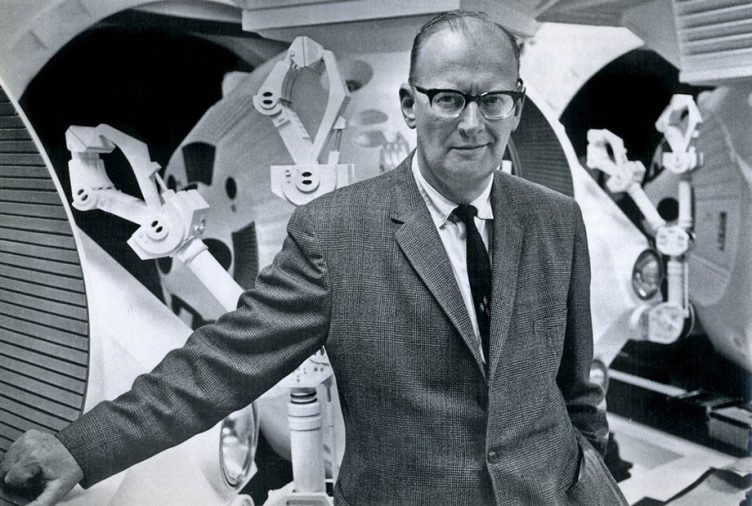
By early 1965, NASA had handed over Syncom-3 and Syncom-2 (the precursor to #3 launched in 1963 into geosynchronous Earth orbit) to the Department of Defense (DOD), which used them to provide global military communications for US national security. The timing of the transfer of satellites to the military was not chosen by chance, as by 1965, Syncom-3 was already providing communications for US forces in Vietnam.
Despite the apparent success of Telstar and Syncom 3, both satellites were single units. The very first ideas about launching full-fledged satellite constellations, as we know them today, only came about towards the end of the 1980s. This stemmed from the Cold War between the USSR and the US, in which space was one of the main fronts.
Missile defense constellation: The Brilliant Pebbles concept
The first concept for a satellite constellation came in the form of the Strategic Defense Initiative (SDI), an American anti-ballistic missile (ABM) defense strategy first presented by Ronald Reagan on March 23, 1983. It was quickly labeled “Star Wars” in the media, as its ambitions were highly futuristic.
Reagan was highly critical of the doctrine of Mutually Assured Destruction (MAD), which was followed by both the US and the USSR. It held that if one country were to launch a nuclear strike against another, it would be met by catastrophic nuclear retaliation. The American president repeatedly referred to MAD as a “suicide pact,” suggesting instead a more rational path – to develop a satellite missile defense system that would make nuclear ballistic missiles basically ineffective.
After four years of research and development, in 1987, American astrophysicists Edward Teller and Lovell Wood presented plans for the first satellite constellation, designated Brilliant Pebbles..
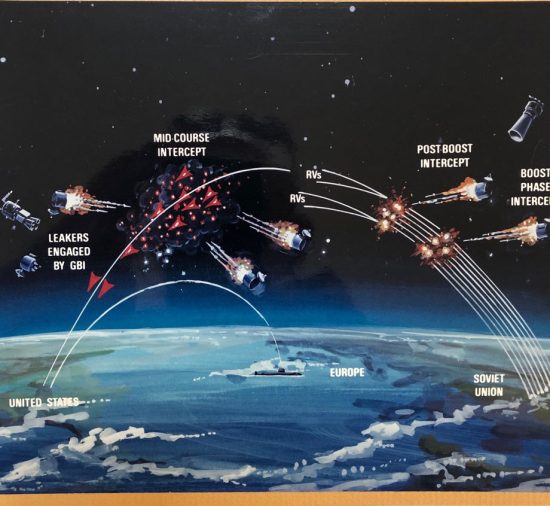
The constellation was supposed to include thousands of small satellites placed in low Earth orbit (LEO). These were to be armed with small, infrared-guided missiles which could shoot down enemy ballistic missiles by following their heat trail. Moreover, doing this would be much more efficient than the ground-based missile defense systems that were in service with the United States in the late 1980s. Of course, the deployment of conventional weapons in space directly violated the Outer Space Treaty (OST) of 1967, but the Reagan administration believed that this would be the lesser evil compared to the Soviet nuclear threat.
To detect ballistic missile launches, the satellites of the Brilliant Pebbles constellation had to communicate with a constellation of satellites equipped with missile launch warning sensors. The astrophysicists and engineers of the Lawrence Livermore National Laboratory (LLNL) who worked on the Brilliant Pebbles project predicted that if the detection sensors were working properly and had reliable communication with missile defense satellites, the process of destroying Soviet ballistic missiles can be made automated, minimizing the participation of any human operators.
The project also laid out the potential for low-latency satellite communications, which would later be implemented in the next generation of satellite constellations in low Earth orbit. LEO was the ideal solution for organizing a communication system due to its fast signal response. On the other hand, the low altitude threshold meant a smaller satellite coverage area than in geostationary orbit (36,000 km). One satellite on GEO was able to cover almost an entire hemisphere with its signal. It was obvious that in order to make the connection stable, hundreds of communication satellites would be needed, and would have to communicate with each other in order to transmit a signal.
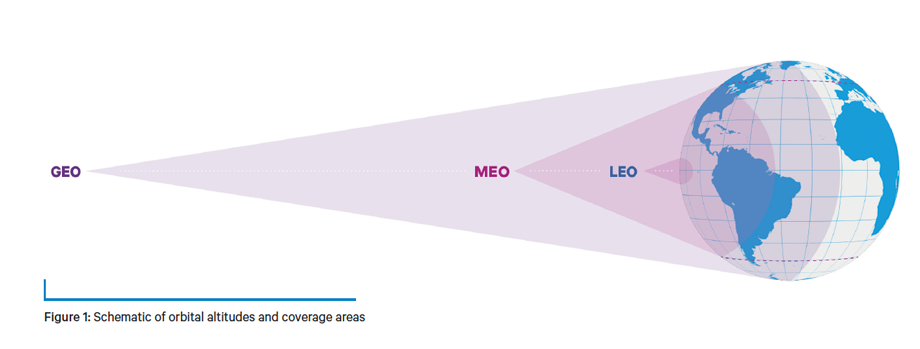
Brilliant Pebbles was an exceptionally good idea, but was not destined to become a reality. The extremely high cost of deploying the satellite constellation (between $10 and $20 billion, according to 1991 estimates) and the subsequent collapse of the Soviet Union left it without demand in the new, as many believed, more peaceful times.
However, the concept of a LEO satellite constellation from Brilliant Pebbles would subsequently form the basis of the SpaceX satellite constellation. Starlink would end up borrowing its vision of a large number of satellites, low signal delay, and inter-satellite communications. There will be no place for missiles on the satellite bus – SpaceX will replace them with repeater antennas.
Iridium, Globalstar, and Teledesic: when the time has not yet come
The last decade of the 20th century marked the heyday of the Internet, with the technology becoming widely available and in demand around the world. Many satellite companies immediately saw this as a unique opportunity to become global providers of satellite internet and communications.
One of the first steps in this direction was taken by the company Teledesic, which proposed placing 840 repeater satellites in a polar sun-synchronous orbit (700 km) to provide commercial broadband satellite Internet. The constellation of Teledesic satellites was expected to be capable of 100 Mb/s uplink and 720 Mb/s downlink. The numbers seemed incredible when you consider that in early 1993, the highest speed modems were only capable of transmitting data at a maximum speed of 14.4 Kbps. And yet, Teledesic promised to revolutionize internet connection.

By 1994, Teledesic’s satellite constellation project was valued at $9 billion, part of which was held by Microsoft, which had high hopes for it. But even this amount was not enough to implement the company’s original plan to deploy 840 relay satellites in orbit. In 1997, Teledesic was forced to significantly reduce the number of probes it planned to deploy down to 288 active communications satellites. This in turn led to a revision of the orbital altitude at which they were supposed to operate, almost doubling to 1315 km instead of the original 700 km. But even then, the production of satellites couldn’t be launched. The company continued to push back the launch date for its constellation, scaring off potential investors and providing precious time for other players in the field.
Teledesic was not the only company of its kind. Iridium also set its sights on conquering orbit with its satellites, but to provide cellular communications rather than providing satellite Internet. To achieve this goal, Iridium planned to launch 77 communications satellites into orbit (it was this number that gave the company its name, since iridium is number 77 in the periodic table of chemical elements). However, later studies showed that 66 communication satellites in low Earth orbit (≈781 km) would be enough to cover the Earth.
The satellites were supposed to communicate with each other in the Ka-band frequencies (26.5-40 GHz). When one Iridium satellite flying over the Earth left the coverage area of the satellite phone whose call it was supporting, the call data was transmitted to the satellite following it, which continued to service the call.
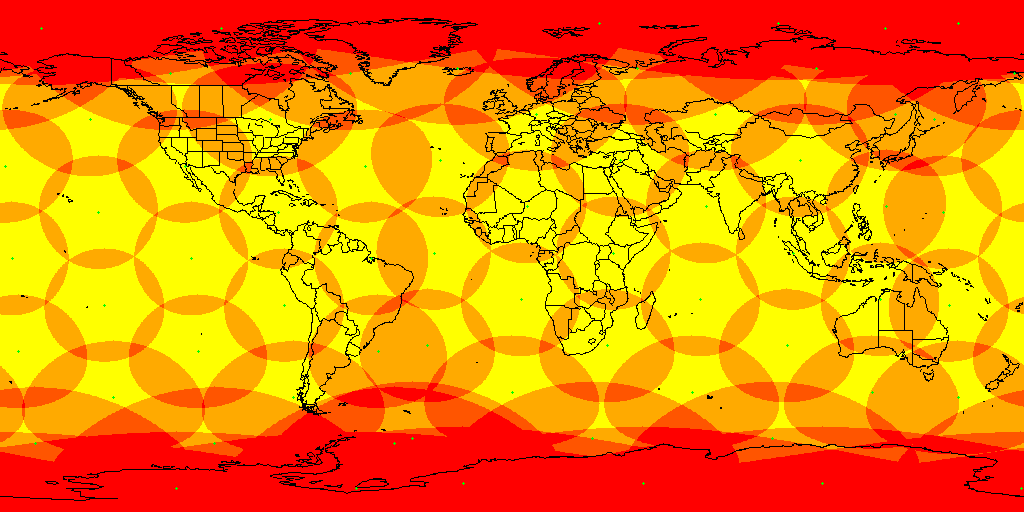
The first generation of Iridium satellites was designed by Motorola under a fixed price contract, while the second generation satellites (Iridium-NEXT) were manufactured by Thales Alenia Space in conjunction with Orbital ATK. A full constellation of first-generation satellites was deployed until 2002, and between 2017 and 2019, 75 Iridium-NEXT satellites were sent into orbit, and continue to provide commercial subscribers and a number of military programs with satellite communications today.
Alongside Iridium, Globalstar, which was founded in 1991, also set out to provide mobile satellite communications. Its constellation of first generation satellites was supposed to have 48 spacecraft (+8 backup satellites) in orbit at 1410 km above the earth. The as yet incomplete Globalstar group made its first mobile phone call on November 1, 1998. The initial cost per minute of conversation was $1.79, which at the end of the 1990s was quite a competitive price for mobile operators.
The Iridium and Globalstar satellite constellations became operational in the late 1990s, but Teledesic’s constellation was never deployed, never getting beyond the launch of a single BATSAT test satellite (Teledesic T-1) in February 1998. And despite the work done, these three companies all shared the same fate, falling victim to the bursting of the dot-com bubble, which saw a Nasdaq Composite index collapse 77% from its March 2000 peak by October 2002. It was a complete disaster for the three contenders for the role of global satellite provider.

In 2002, all three companies were forced to file for bankruptcy. However, Iridium and Globalstar managed to weather the crisis and, after being sold to another owner, continued to service their constellations and provide satellite communication services. Teledesic, on the other hand, was less fortunate and never materialized its ambitious plans to roll out an Internet constellation.
In addition to the bursting of the dot-com bubble, which led to the collapse of many ambitious startups (and not only in the space industry), it had become obvious by the early 2000s that these such satellite constellation projects were unprofitable. First and foremost was the problem of the exorbitantly high cost of putting payloads into orbit. It was one thing to do with a five-satellite constellation, but quite another when you had to launch tens or hundreds of spacecraft into orbit. The brilliant ideas of Iridium, Globalstar, and Teledesic were ahead of their time, offering great technologies which were nevertheless poised to bankrupt their backers.
But we would only have to wait another ten years before SpaceX’s return launch vehicles turned the space launch industry upside down, allowing CEO Elon Musk to think about putting into orbit not just hundreds, but thousands of spacecraft operating as part of a single satellite constellation. Read about it in our next installment in this series.




